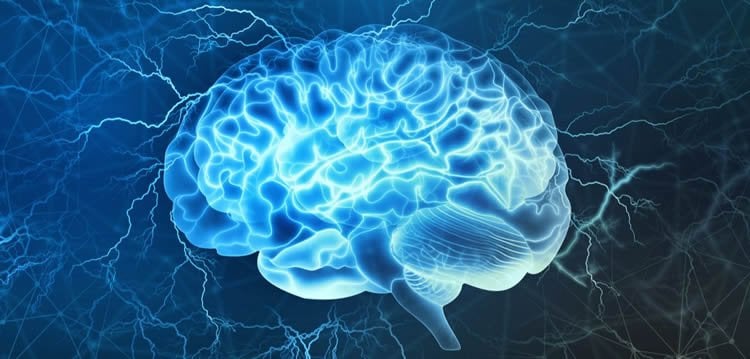Summary: Researchers describe what happens in the brain just prior to making a decision.
Source: University of Oxford.
Real-time monitoring of the dynamics of endogenous molecules in organisms is an important aspect in the study of diseases. However, this process is difficult because of issues such as sensitivity, resolution, and invasiveness. This challenge has become a major motivation for the development of new effective tools for real-time monitoring of analytes of interest.
In experiments asking fruit flies to distinguish between ever closer concentrations of an odour, the researchers led by Professor Gero Miesenböck had previously identified a tiny minority of about 200 nerve cells in the brain as critical for decision-making.
In new work, the team found that these nerve cells collect evidence for the alternative choices as minute voltage changes across their surface. These changes build up over time until they reach a hair-trigger point, at which the nerve cell produces a large electrical impulse. This impulse signals that a decision has been reached.
The team reports its findings in the journal Cell. The work was funded by the Wellcome Trust and the Gatsby Charitable Foundation.
‘We have discovered a simple physical basis for a cognitive process,’ says the lead author of the study, Dr. Lukas Groschner.
‘Our work suggests that there is an important analogue component to cognition. People sometimes compare the brain to a digital machine operating with sequences of impulses and silences. But much of what looks like silence is actually taken up by analogue computation.’
The decision-relevant neurons are distinguished by the presence of a genetic regulator molecule called FoxP.

FoxP determines how evidence is added and retained. Flies with defective FoxP produce too much of an electrical shock absorber that makes the cells’ voltage less likely to change with each new piece of information. Decisions therefore take longer—the flies become indecisive.
Fruit flies have one FoxP gene, while humans have four related genes. Human FoxP1 and FoxP2 have been associated with intelligence and cognitive development, hinting at commonalities.
‘Fruit flies have an impressive record for making seemingly impenetrable biological problems tractable,’ says Miesenböck. ‘As a result of studying these insects, we understand the basic principles of how a fertilised egg develops into an organism and how the body clock works, to name just two examples recognised by Nobel prizes.’
‘Research on fruit flies is now beginning to make significant inroads also into tough problems of cognitive science and psychology. I wouldn’t be surprised if the long-term impact were similarly profound.’
Source: University of Oxford
Publisher: Organized by NeuroscienceNews.com.
Image Source: NeuroscienceNews.com image is adapted from the University of Oxford news release.
Original Research: Open access research for “Dendritic Integration of Sensory Evidence in Perceptual Decision-Making” by Lukas N. Groschner, Laura Chan Wah Hak, Rafal Bogacz, Shamik DasGupta, and Gero Miesenböck in Cell. Published March 14 2018.
doi:10.1016/j.cell.2018.03.075
[cbtabs][cbtab title=”MLA”]University of Oxford “How Decisions Form in the Brain.” NeuroscienceNews. NeuroscienceNews, 1 May 2018.
<https://neurosciencenews.com/decisions-neuroscience-8936/>.[/cbtab][cbtab title=”APA”]University of Oxford (2018, May 1). How Decisions Form in the Brain. NeuroscienceNews. Retrieved May 1, 2018 from https://neurosciencenews.com/decisions-neuroscience-8936/[/cbtab][cbtab title=”Chicago”]University of Oxford “How Decisions Form in the Brain.” https://neurosciencenews.com/decisions-neuroscience-8936/ (accessed May 1, 2018).[/cbtab][/cbtabs]
Abstract
Dendritic Integration of Sensory Evidence in Perceptual Decision-Making
Perceptual decisions require the accumulation of sensory information to a response criterion. Most accounts of how the brain performs this process of temporal integration have focused on evolving patterns of spiking activity. We report that subthreshold changes in membrane voltage can represent accumulating evidence before a choice. αβ core Kenyon cells (αβc KCs) in the mushroom bodies of fruit flies integrate odor-evoked synaptic inputs to action potential threshold at timescales matching the speed of olfactory discrimination. The forkhead box P transcription factor (FoxP) sets neuronal integration and behavioral decision times by controlling the abundance of the voltage-gated potassium channel Shal (KV4) in αβc KC dendrites. αβc KCs thus tailor, through a particular constellation of biophysical properties, the generic process of synaptic integration to the demands of sequential sampling.







